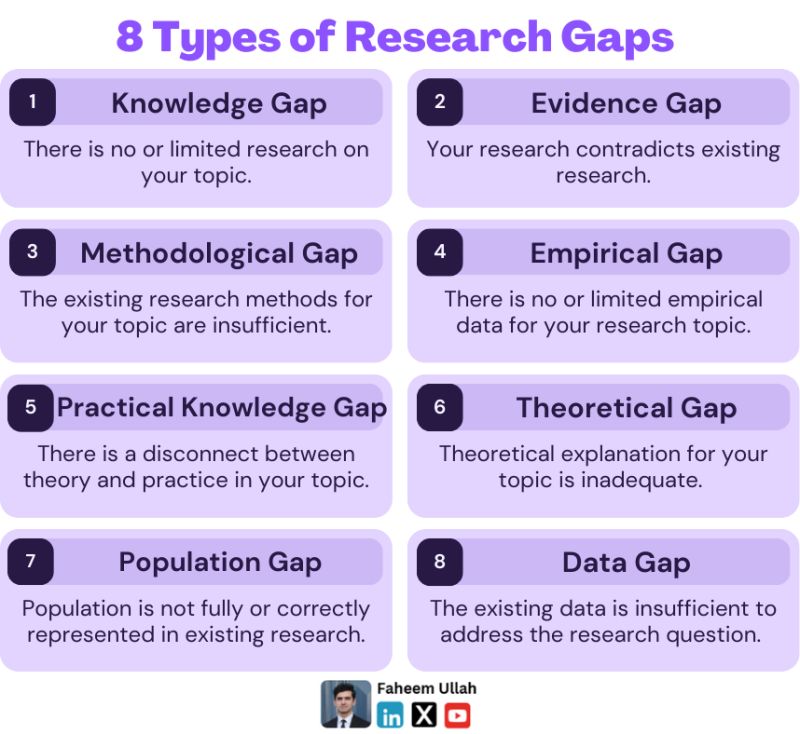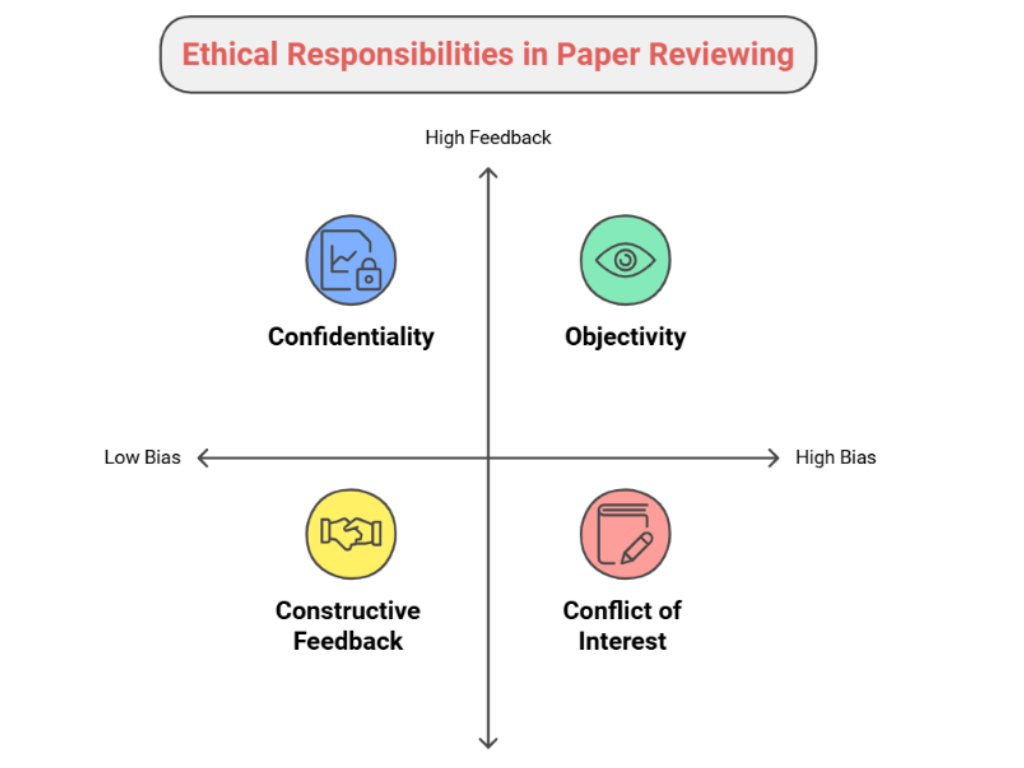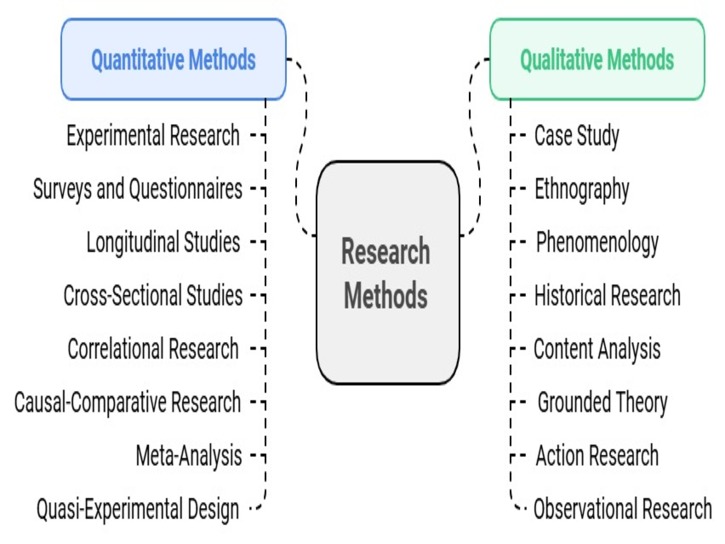As a PhD student, one of your first and most critical challenges is identifying a research gap. This gap serves as the foundation of your research and defines the unique contribution you’ll make to your field. However, identifying research gaps can be daunting, especially for early-stage PhD students.
Before diving into how to find these gaps, it’s essential to understand the different types of research gaps that exist.
Below, I break down the 8 types of research gaps to help you approach this task with clarity and confidence.

1. Knowledge Gap
A knowledge gap arises when there is little to no existing research on a particular topic or phenomenon. This is common in emerging fields or areas that have been overlooked by researchers.
Example: A new technology or phenomenon that hasn’t been studied yet.
Why It Matters: It highlights areas where little is known and requires pioneering research to fill the void.
2. Evidence Gap
An evidence gap occurs when existing research lacks sufficient evidence or presents conflicting findings. This type of gap points to areas where further validation or exploration is needed.
Example: Conflicting findings on the effectiveness of a medical treatment.
Why It Matters: Addressing these contradictions can clarify confusion and advance the field.
3. Methodological Gap
This gap arises when the methods used in prior studies are inadequate or outdated for the current research questions. It may also occur if certain methods haven’t been applied to your area of study.
Example: Using outdated methods that fail to capture modern complexities.
Why It Matters: Developing or refining methods can improve the reliability and depth of future research.
4. Empirical Gap
An empirical gap exists when there is little or no real-world data available for a topic. While theories may exist, the lack of empirical evidence leaves the topic incomplete or unvalidated.
Example: A topic heavily discussed theoretically but lacking real-world data.
Why It Matters: Empirical studies validate theories and provide actionable insights.
5. Practical Knowledge Gap
This gap highlights a disconnect between theoretical frameworks and their practical application. It often reflects a lack of real-world relevance or usability of the research.
Example: Educational theories that don’t align with classroom realities.
Why It Matters: Bridging this gap makes research applicable and impactful in real-world scenarios.
6. Theoretical Gap
A theoretical gap occurs when the current theoretical explanations for a topic are incomplete or insufficient. This gap often highlights areas where new or refined theories are needed to explain phenomena better.
Example: A phenomenon explained by outdated or one-sided theories.
Why It Matters: Strengthening theoretical frameworks can lead to a deeper understanding of the topic.

7. Population Gap
This gap arises when certain populations are underrepresented or misrepresented in existing research. It highlights a need for more inclusive studies to represent diverse groups accurately.
Example: Studies focusing on urban populations while ignoring rural communities.
Why It Matters: Ensuring diverse representation makes research more inclusive and generalizable.
8. Data Gap
A data gap indicates that the existing data is insufficient to address the research question effectively. This can include missing data points or outdated datasets that limit the study’s scope.
Example: Incomplete datasets or missing variables relevant to your study.
Why It Matters: Identifying and filling these gaps ensures robust and credible conclusions.
Pro Tips for Identifying Research Gaps
1. Dive Into Literature Reviews: Read the most recent studies and note where authors suggest future research.
2. Use Tools Like Litmaps or Connected Papers: Visualize relationships between existing research to spot gaps.
3. Collaborate with Experts: Discuss potential gaps with your supervisor or colleagues.
4. Stay Curious: Ask yourself questions like, “What’s missing here?” or “Who is left out?”
Final Thoughts
Identifying a research gap is not just about finding something no one has studied—it’s about understanding what the field needs most. By mastering these 8 types of gaps, you can position your research to address critical issues and make a lasting impact.
Action Step: Pick a recent topic or paper in your field and identify which of these 8 gaps it addresses—or fails to address.





Pingback: 10 simple ways to 10x your PhD Productivity
Thank you very much for the knowledge you share with us on this platform. You can’t imagine how useful it has been for us, especially as a PhD candidate.
I just couldn’t go away your site prior to suggesting that I extremely enjoyed the standard information a person supply for your guests? Is gonna be back regularly to check out new posts
I am reading for my PhD and I have found this literature to be very important
You are my aspiration, I own few web logs and sometimes run out from to post : (.
Pingback: 10 Tips for PhD Thesis Writing